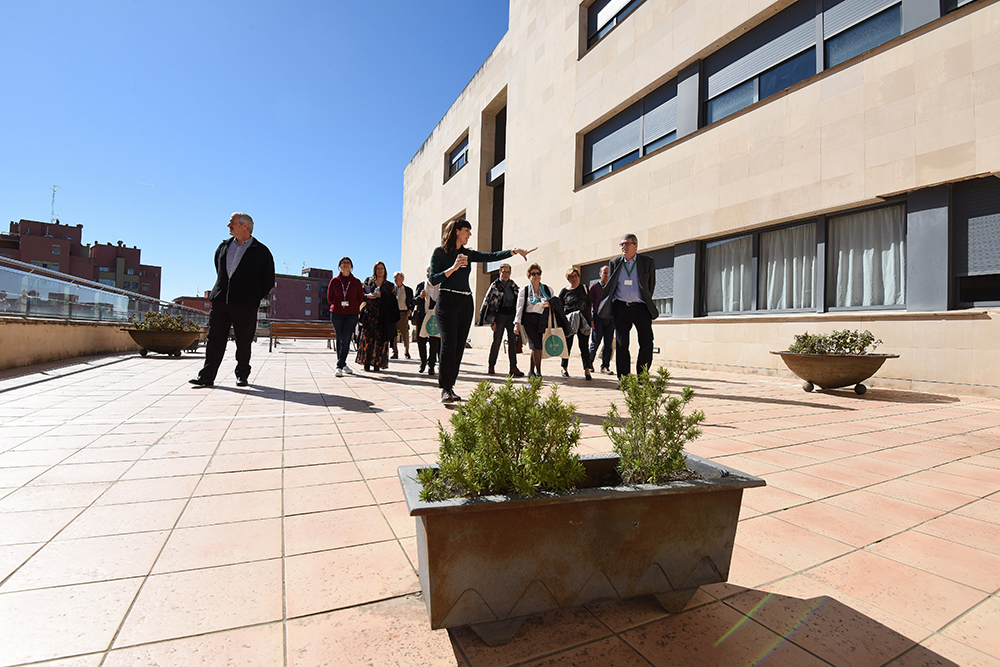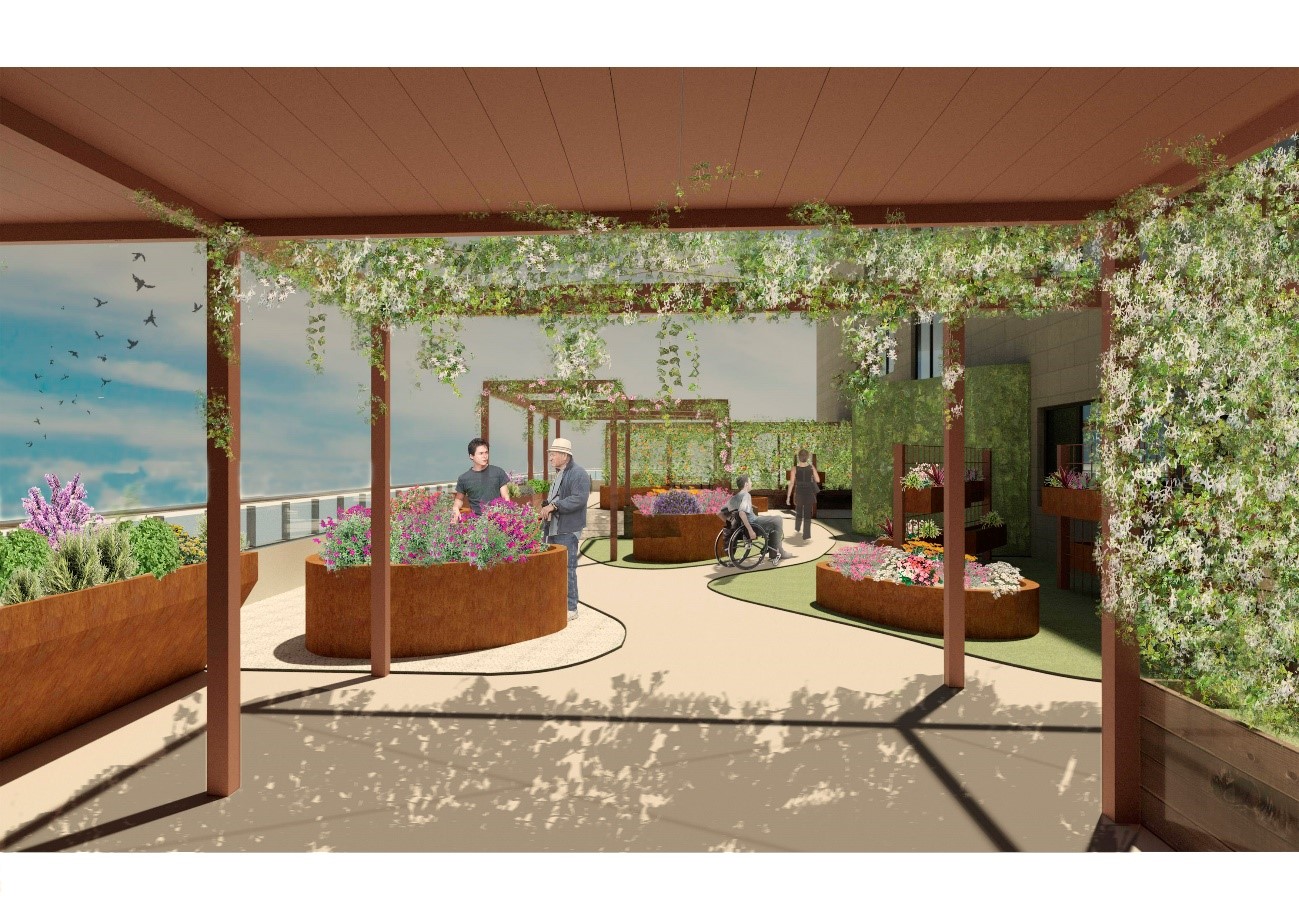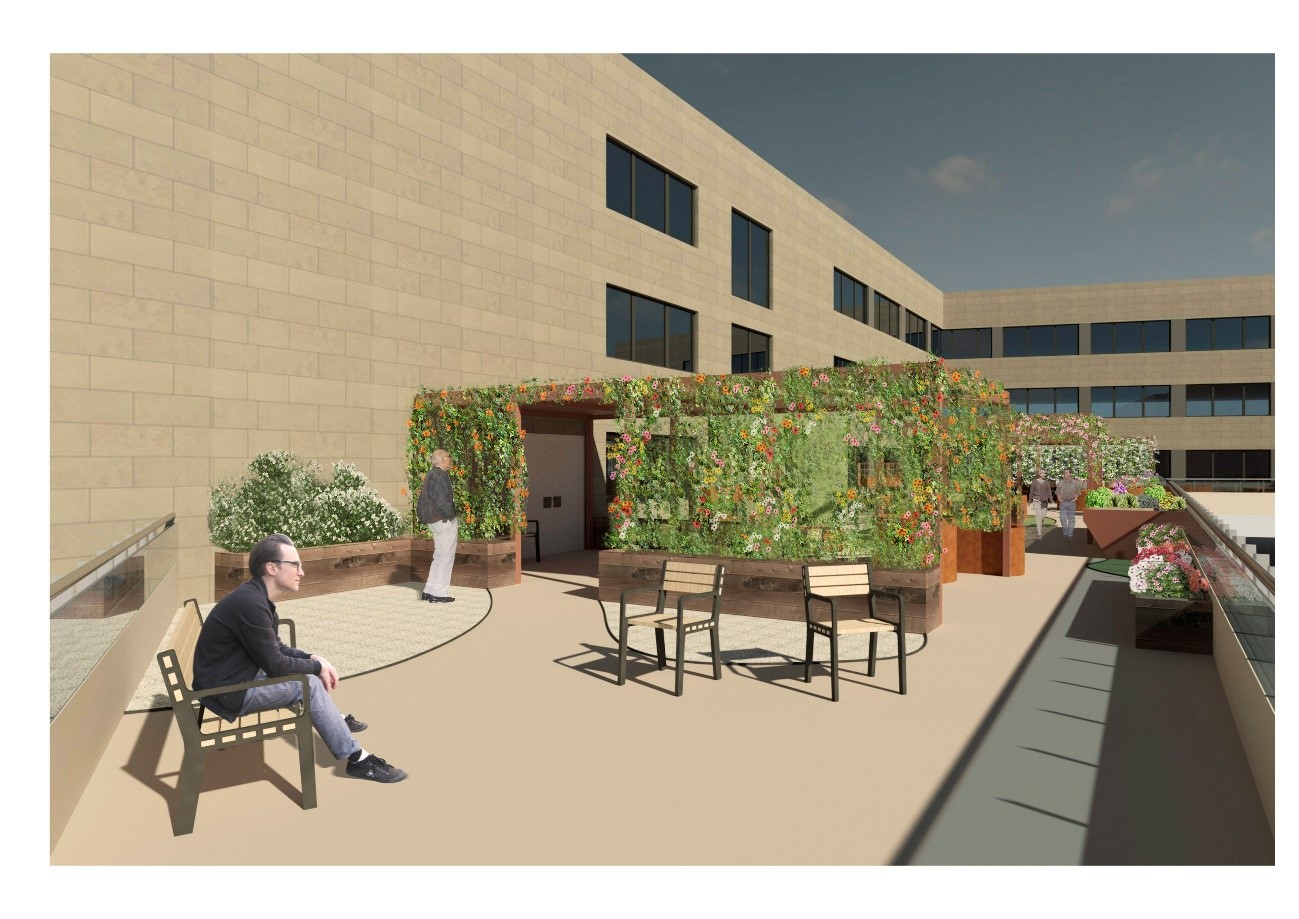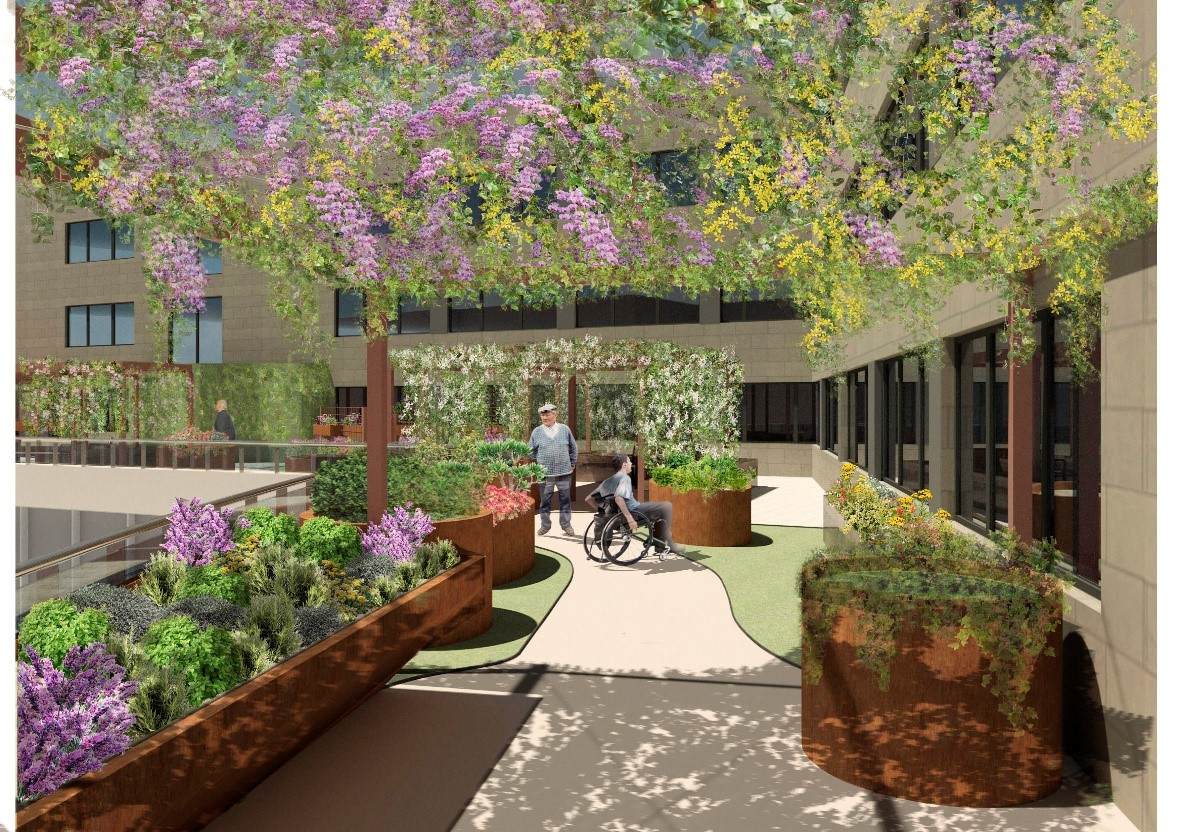Contact with nature as a therapeutic value has been present throughout history. But scientific advances in the field of medicine since the 1950s have taken the patient away from nature and made the disease the focus of attention. With the aim of humanizing the environment, the therapeutic garden project of the Bernat Jaume Sociosanitary Center was born, which will mean an improvement in care for all patients.
The presentation of the Therapeutic Garden project was made with the motto “Sometimes a flower does make summer”.
The Fundació Salut Empordà has proposed turning the terrace of the Bernat Jaume Health Center into a therapeutic garden. This space will provide psychophysical well-being to both patients and family and professionals.

The presentation was attended by Martí Masferrer, Esther Celda, Laia Isern, Joan Canals, Anna Aldrufeu, Jordi Masquef and other members of the board of the Fundació Salut Empordà.
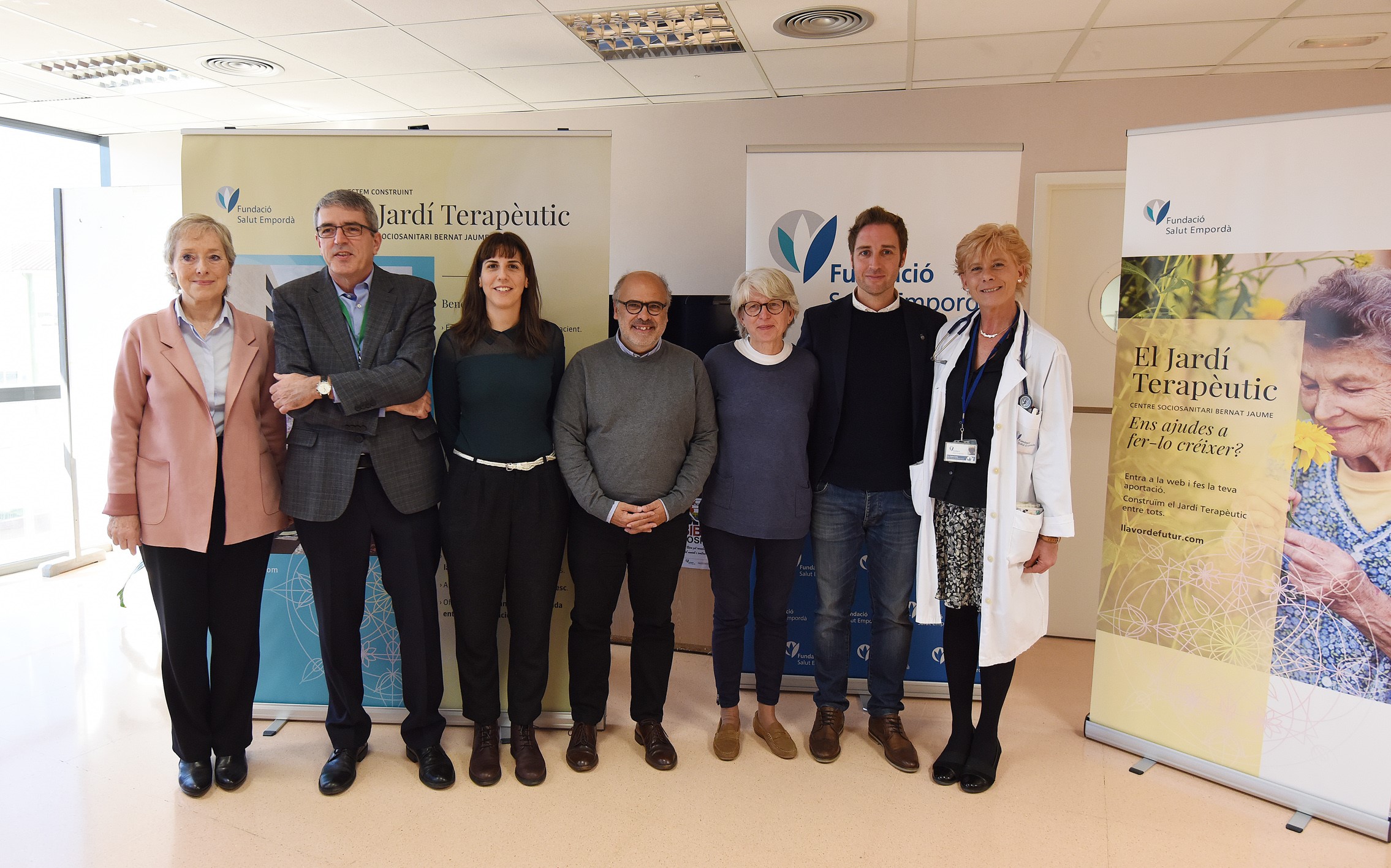
After the presentation, there was a tour of the future garden where you can see the marks of the result.
From here, a sponsorship campaign begins for the creation of this new space.
For more information you can enter: www.llavordefutur.com
The architecture in the therapeutic garden is of fundamental importance, thanks to the creation of different spaces where users can carry out very diverse activities.
These quality environments are achieved by the time the garden is introduced into the interior of the building with the placement of pots with vegetation and wooden benches. The construction of a porched space at the exit of the garden allows this smooth transition between inside and outside and thus avoid a direct exit that is not pleasant for people, as it allows users to enjoy a previous space with shade and rain cover. The garden incorporates paths that generate curved spaces in which patients as they progress can observe and touch the nature that is created such as the colorful and aromatic flowers, the harmonious water fountains and the songbirds. Around these paths there are also grass blankets that can be walked on and gravel that provide different sensations that are experienced when stepped on.
The pots are incorporated throughout the garden and are designed with organic shapes designed for integration with the environment and adapted for people in wheelchairs.
To help make this tour a pleasant walk, atmospheres are created along the way with different furniture such as benches, chairs or sunbeds that are of great importance as they provide and help patients to have places to socialize with. relatives or the users themselves, or in which to simply sit and restore their own balance.
Thanks to the organic shapes of the path, it favors the appearance of open spaces where more dynamic activities can be carried out.
On the other hand there are the porched areas in which spaces are formed that may or may not be covered. With this differentiation of environments, patients can enjoy the garden at any time of the year, as they have pergolas covered by rainy days or those that are uncovered, and so users can be aware of changes in the cycle. life, the seasons or the course of the water.
The privacy of the users is very important and that is why, thanks to the curved shapes of the paths, it is possible to create spaces that are different from each other where people can enjoy the garden alone or accompanied. Vertical plant growth is another factor that helps people find shelter.
These porch spaces have pots with vegetation where the climbing plants create environments of transition between nature and architecture, in addition to the positive stimuli that are transmitted with the combination of aromas of aromatic plants.

